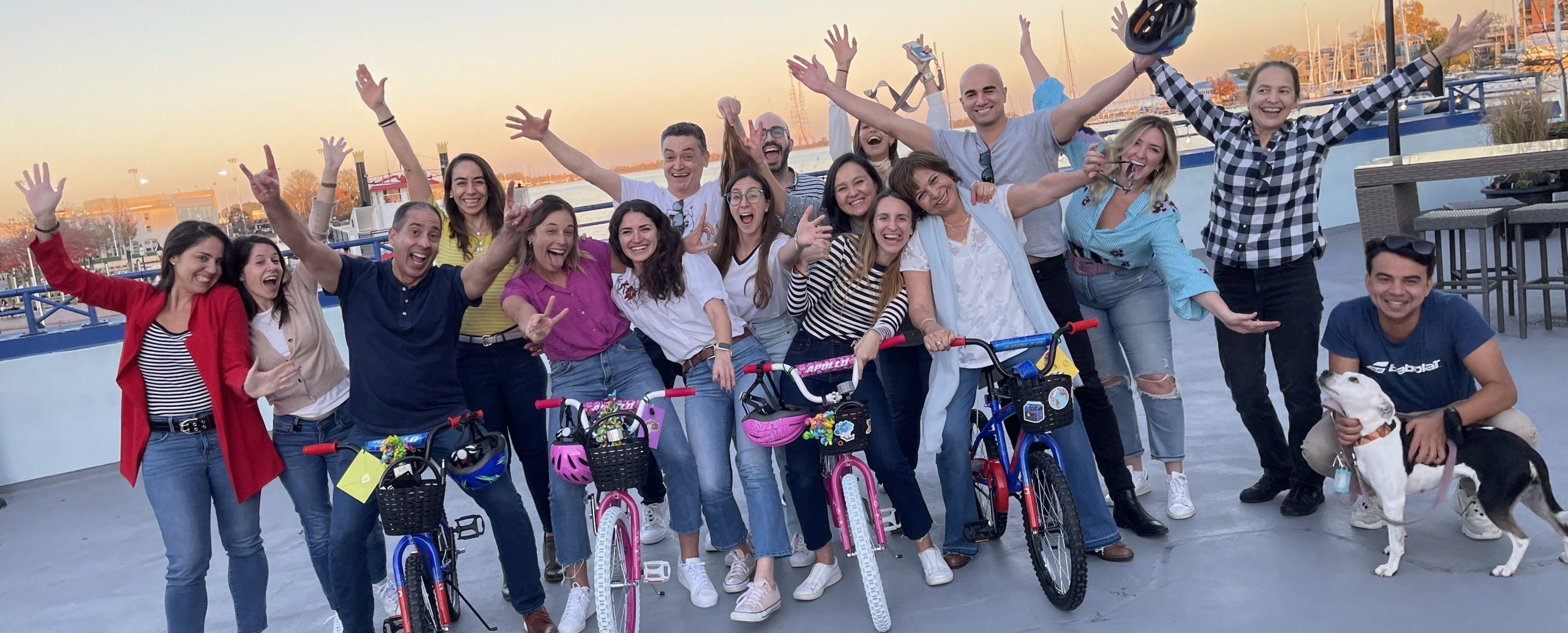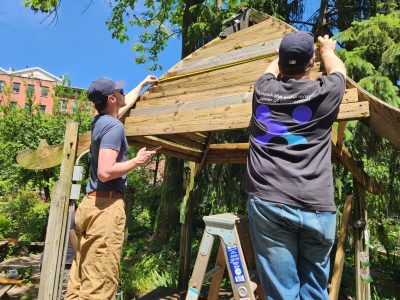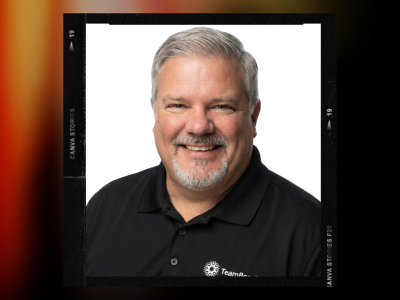STRONG TEAMS DON’T HAPPEN BY CHANCE 
Enhancing Your Employee Onboarding Experience
w/Terry Jones
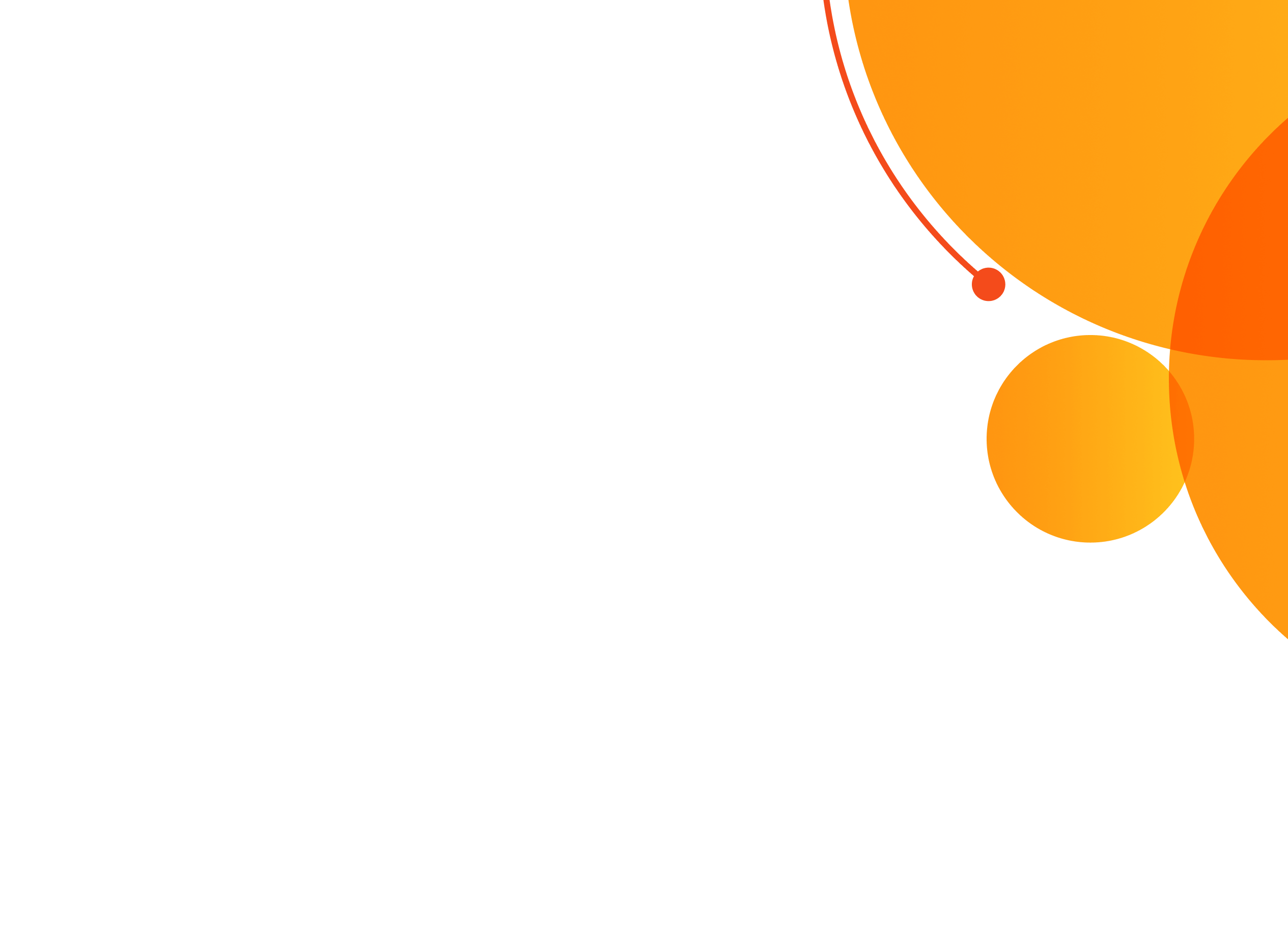
Use the buttons above to listen now.
Transcript - Enhancing Your Employee Onboarding Experience
Rich: On, this episode of team building saves the world.
Rich: What kind of knowledge do you think you could give them?
Terry: Are we talking in person? Are we talking virtual either? Either or?
Rich: Yeah, either or.
Terry: I think a really good leader understands that I get the best out of my employees if I keep their way clear, they’re actually able to see wow. Okay. So I can do this.
Rich: What kind of things should I be asking for?
Terry: All the things that you think you need to know to be successful in your role.
Rich: Hello team, it’s me, your old friend Rich Rininsland host of team building saves the world. The show where I speak to the leaders and innovators in employee wellness and corporate culture and how it reflects in the world of today. And today we’re discussing employee onboarding with talent development trainer and career coach Terry Jones.
Rich: But first I need to share some love with my supporters at team bonding. If your team is ready to experience teamwork through the power of play visit team bonding.com to learn more. Now team, join me in welcoming the founder of the 3A Academy creator of the rise and shine promotion system coaching program, and online training service series, as well as author of how to get promoted faster how I went from manager to vice-president in 14 months, Mr. Terry Jones, give it up for him.
Rich: Hello Terry! That is just a small group of people. I keep chained up under my desk just so they can applaud you, Terry you that’s their only job in life. How are you my friend.
Terry: I’m doing well , thanks for having me.
Rich: Thank you. Thanks so much for coming on board. So we’re talking onboarding uh, which for anybody out there who may not be aware is simply the process of getting employees up to speed and working, right.
Rich: I mean, that’s the simplest definition that I could come up with. And then when I was doing my research and every job I’ve ever had because Terry just so you know, a little bit about me, I’m an actor, I’m a performer. That’s what I’ve been my entire life, which means I have had a series of jobs that help pay for my career.
Rich: And whether that’s waitstaff, whether that’s, you know, corporate security work, whatever I happen to be doing, there’s always that training period in the beginning. Yeah. So that’s what we’re going to be focusing on as we talk about it today. But we also know, especially from the podcast, uh, over the last couple of years, we know we’re going through still the great resignation has not even has it started to turn around yet?
Terry: Um, I don’t think so. I think it’s pretty, it’s pretty aligned with what you’re thinking as far as people looking at their careers in a way that’s totally different then recent past.
Rich: Right. So we have now hopefully soon, uh, all these new jobs that are going to be filled with new employees who need to be brought in, what would you describe as a good onboarding experience?
Terry: I think a good onboarding experience is one that is sort of an extenuation of uh, the interviewing process, because oftentimes what happens is, uh, companies, uh, the good companies understand that you’re not just interviewing and sort of having them sell themselves to you, but you’re also selling the company.
Terry: And so a lot of employees get really excited about having joined the company. So I think a really good onboarding process sort of affirms the person’s decision to join the company.
Rich: Okay
Terry: Then it also really sets them up for success. So the company has thought methodically about how do we make sure that we are setting this person up for success within their first 30, 60, 90 days.
Rich: Okay. So what kind of things would you recommend if you were to come to a company and say, here’s how you get good onboarding.
Terry: The first thing that I sort of do in my process is have focus groups with the leaders because oftentimes when a company bring, when they will bring me in, they have a resemblance of a training department or they are trying to build a training department.
Terry: So to properly do my job, I need to understand what they think the onboarding process actually is. And then having conversations with other senior leaders to get their bias, that they feel a part of the actual process, but ultimately I think a really good onboarding process again, reaffirms the person’s decision to have come to the company.
Terry: So that could include getting them started in the course curriculum for their particular role, um, that could include partnering them with a mentor or a coach or someone who’s really good at their job, a high performing person who’s actually been in the trenches that can give them tips and only a person who’s been in the trenches could actually give them.
Terry: I think those would be really, really good parts that I always try to include in my crafting and creating an onboarding process for a company.
Rich: Because I was looking up, uh, as I was getting in preparation for the episode today, I was looking up some stuff online and I’m finding out that it turns out that onboarding could be where the employee turnover problems even begin, how does that function? How does that work?
Terry: I totally totally agree with you because I think that a lot of companies, as I mentioned earlier, they sell themselves to be one way. And with the actual onboarding process, a, a detailed, well thought of onboarding process says that we don’t just care about the work when we care about you. Hey, welcome to the company. And I think a lot of companies miss out because they miss that part.
Rich: Right.
Terry: They, the, the worst thing you can do is have a new employee to come in and it’s like, okay, just, you know, do it, you know, here’s the, here’s the, here’s your desk. Here’s where we want you to you just do it right.
Terry: And so this day and age with the great resignation with there being so many jobs available, companies really want to do everything they can to maximize the possibilities specifically in the onboarding process. So that it almost feels like a continuation of the actual interviewing process.
Terry: Right. Because I mean, I don’t know if this is a number you have off the top of your head or in your notes but how expensive is onboarding depending upon the course, the corporation.
Terry: Yeah, that’s a good question. Um, I don’t have an exact number, but in my experience, having worked with different companies, some companies are totally dedicated to the onboarding process and really understand that it is a well spent expense and other companies they don’t.
Terry: So I think it really varies. One of the things that I do know for the onboarding process to be the most impactful that it can be the highest levels of the company they have to want it to happen and they have to be advocates of the onboarding process because just in the learning process, overall, it’s sort of a trickle down effect because of the, if one person is training something at one level, but the people who are above them, they want to be an exception to the rule. Then those people won’t take it seriously. And then they are paying me gobs of money for no impact, right. And that’s what might be good for the time being. But if I’m trying to use those stats to actually show how I’ve been impactful, that can be a little difficult
Rich: Right. Because once you’ve got, somebody has resigned you now not only have to fill that position, but you’re talking about that new hire is not going to be ready to even perform at the level of the previous employee for months.
Terry: That is correct. And the, and the way that you get closer to maximizing the benefits from an expense, a payroll expense is to have a impactful, structured onboarding process. Right? So initially I think sometimes the thought process is from, from some, uh, higher managers, let’s just get the person in, let’s just put them in the seat.
Terry: And it’s, it’s always a struggle sometimes between training and operations, because we’re like, no, actually, if, if, if before they come on site, if we could have them ideally for a week or two, when you get this person they’re able to hit the ground running, making up some of that ground when the position was actually vacant and they come with a certain level of knowledge that they wouldn’t normally have if you if you threw them in all in on first day.
Rich: What kind of knowledge do you think you could give them?
Terry: Let’s say, for example, if it’s a shadow experience. So wait, so maybe where they’re not at their, let’s say home base, but they’re with an actual coach they’re able to see ideally from a person who is high performing in that role, they’re actually able to see. Wow. Okay. So I can do this. Okay. Wow. So, uh, this makes a lot of sense that this person is doing a, B, C, and D. So they actually able to practically to, to see it from the ground level to become more confident and really learning from a person who’s doing really well in the position. And a shadow experience is really, really invaluable.
Rich: What would you consider a bad example? I don’t want you to give me names by any means, cause these are all past clients of yours. I’m sure, but what’s a bad example of some onboarding that you’ve seen. I guess is what I’m asking.
Terry: No structure to the process at all. Uh, literally, um, let’s say if it’s, uh, in sales, property management, a leasing consultant resting on that person’s past experience for sales without giving them any sort of structure about who the company is, what’s the company’s mission, what’s the company’s vision? How does your actual role help us to further get there in that vision? Right. Which, which is another thing I think our really successful onboarding process does, it helps the employees themselves to see where they fit in, in the larger picture and the larger success of the company.
Terry: So I think that by not doing that, you’re not setting the new person up for success. And you really are you’re holding back the productivity of an entire department in some instances, because of that.
Rich: Basically what it sounds like you’re talking about is corporate culture.
Terry: Yeah, absolutely.
Rich: And if this works great, What kind of benefits do we see?
Terry: I think when, when we, when I mentioned earlier about where the company what the vision and the mission of the company actually is being clear on what that is, I think has a huge impact on the actual culture, because I worked for companies that were really serious about customer service. So they made sure that in every part of the onboarding process, in how they did sales, it was customer centered, how we communicated with each other in meetings, uh, where other customers, our external customers, how we treat our internal customers are also very, very important.
Terry: So I think being 100% clear on where the company is wanting to be, what the mission and the vision is, and making sure that you’ve actually been intentional about how that affects the culture and what you’re doing to make sure that that happens.
Rich: All right, Terry, if you can just hold tight for me real quick, I do need to step away just for a quick second, and I need to tell all my team out there about a company I’m very proud to be a part of TeamBonding. Team bonding was founded over 20 years ago with one simple question. How can employees have a great time while fostering strong, authentic bonds between people who work together? They’ve created a catalog of innovative events using the power of play as a learning tool and tapping into the correlation of work and play from scavenger hunts to jeopardy and so much more the team bonding of activities live virtual or hybrid maximizes the impact of team building with an accent on fun.
Rich: So visit team bonding.com to schedule your event now, team bonding when you want seriously fun results.
Rich: All right. So we are back with Terry Jones. Terry, let me actually ask you about team building. Is there anywhere that team building can fit in like a company like I work for in this onboarding process?
Terry: Absolutely, I think that specifically, when you think in terms of where the company ultimately wants to be, how do they want the employees to feel so culture, the climate? How do they want it to actually feel, um, working for that company? So I think in an onboarding process, having specific teams building exercises would be really, really important and taking this idea and turning it into something practical and tangible that the new person can hold on to.
Rich: While all of this sounds great. How long has this been in the works? How long has this new philosophy? Is this something that we’ve seen just for the pandemic or is this the way things have been turning for over the many years?
Terry: Are you’re talking specifically about team-building?
Rich: No, I’m talking about specifically onboarding itself, this philosophy of onboarding that you’re talking about. Because quite frankly, when I was going, still searching for jobs, this was not the way that I was brought on. It was here’s your desk, here’s your job, do it right. And then if you have a question, that’s what HR is for.
Terry: Right. You know, I would like to tell you that there’s been some broad awakening across companies, but I can tell you that that’s not the case.
Terry: It is sort of hit and miss based upon my experience as a consultant, working at different companies, I have sort of crafted this onboarding process and philosophy based upon my experience, having worked for some really good companies who hired really good, expensive consultants that I had a front row seat to learn from.
Terry: But if it’s is this happening broadly, I would like to say that it would be great, but the reality is it’s definitely to this day hit or miss if, cause um, I have a Tik TOK page and whenever I talk about anything related to whether it’s onboarding or anything else related to the workplace, you can just go through the comments to see how there’s such a vastly different people have vastly different experiences.
Terry: And so some of the things that you think it would be sort of understood and old school it’s sort of still happening unfortunately.
Rich: So are we talking about, because again, all of this seems to come down to a kind of bottom line, are we talking about the, this is the new wave or, or the changing wave of like fortune 500 companies and above, or is this something that anybody could be doing?
Terry: I think anybody could be, could actually be doing it. My experience with larger companies is that this is my personal experience. It’s been a task. It is, it is, it is actual work, getting them to see the benefits of a structured onboarding training. So anyone in L and D knows that we are always, we are thinking about the end when we start, so that we can justify quantify the results of the training to be able to keep it alive. And I think that if anyone is looking, if a company is thinking about it, you really have to be committed recognizing that it will be okay. Uh, personnel, uh, financial time commitment to actually welcoming people in having them to feel good about their decision to join the company, to set them up for success.
Rich: Gotcha. Now let’s look at it from the other end of the spectrum. Let’s look at it from the employee’s side. First off. What should I be looking for with onboarding when I’m a new hire?
Terry: Good question. I think you start with the interview. I think you actually ask them in the interview. So tell me about your onboarding process. And if they go ummm, uhhhhhh
Rich: You’re going to sit down and watch. You’re going to sit down and watch two videos, and then you’re going to sit and fill out this form
Terry: Here you go. Red flag. So I think starting being inquisitive during the interviewing process, asking them about what their onboarding processes is, where you start. And, you know, one of the things that I always talk about is as being an advocate for yourself, because the reality is, the companies are going to advocate for them, how do you as the employee advocate for you?
Terry: And so to some extent, I think employees have to be willing to say what it is that they want, what it is that they need. And again, Ideally it’s the company would understand that and provide that. But, but if not, I do think that if it’s not hurtful to be able to verbalize what it is that you think you need in order to be successful, to get acclimated into your role.
Rich: What kind of things should I be asking for?
Terry: All the things that you think you need to know to be successful in your role.
Terry: Right. I really, I think a really good leader understands that I get the best out of my employees if I keep their way clear. Right. Some leaders haven’t learned that lesson yet. Some, especially the ones when you talk about, uh, you know, back in the day, going through the trenches, being thrown into the fire, there’s still a part of some of those people that believe that they learn the best because of that.
Terry: And I’m like, no, we couldn’t do something different.
Rich: Right. How important is management in this?
Terry: Very, very important onboarding in large part is a part of the training process. Right? And, uh, the training is the initial training. That’s really the awareness. That’s making people aware of what it is that they don’t know or what it is that they need to know or what it is that they should Polish up on the rubber meets the road in practically applying it once they left the training center and they’re actually on the job. And so you need for the manager to understand one, everything that you’ve trained them on to understand all of the standards, why, so that they can actually reinforce it or put some sort of system in place to reinforce that actual training.
Rich: Yeah. You don’t want the first time you meet the manager to be when the manager comes and tells you you’ve been doing everything wrong for the past four weeks.
Terry: Absolutely.
Rich: Just going over it real quick. What are some of the benefits that we see of good onboarding?
Terry: I think the employees feel good about having joined the company. They are able to get up and running very quickly. They feel like you’ve actually set them up for success. They feel welcomed into the company and ultimately right. If you’re taking the time to properly onboard them, you’re setting the person up to be successful. And if that person is more successful and then department is more successful, the department is most successful then the region is more successful. If the region is more successful. The company will be more successful. Right?
Rich: Right. So as you can probably tell I’m a bit of an extrovert and it’s very different I would say that I would be very different onboarding than somebody was more introverted. Is there a way to differentiate the training? Cause everybody’s got to know the same thing. Say, say there’s two jobs that are being filled in the same department. You have me and then you have someone who’s not as outspoken as me. So how do we make sure that both of those people are well cared for?
Terry: So I think you want to be aware of who’s an introvert or we to let’s say, let’s look at a question. Are we talking in person? Are we talking virtual or either or?
Rich: Yeah, either or.
Terry: Okay. So I think in preparation for the training, you want to have conversations with maybe some of the managers as sort of a starter conversation to find out, to get to the temperature of the audience. Is it more introverts? Is it more extroverts? Be intentional about who’s actually in the room and then I think you are targeted and strategic in some of your activities because I am an introvert. I simply play one on TV. I thought I actually sort of understand how to sort of meet them where they are. And I think in a way that you can meet them, where they are is being really strategic and active.
Terry: Okay.
Terry: So if you’re on zoom, for example, during a breakout activity, so there’s 20 people break them up and put them in to breakout groups of three and give them a question that they have to sort of ponder and to ask and talk about. And then as you, as the facilitator are going from room to room, affirm those people who’ve been really quiet, affirm their comments. Encourage them to, okay, so when I get back to the larger group, you’re comment was so good would you feel okay sharing that with the larger group? Oh yeah. Sure. So you’ve affirmed their comments.
Terry: You go to the larger group, but then sort of bring them out. So I think understanding your audience being targeted and strategic, I think will be really helpful in actually keeping the conversation, more engaged. And another thing, if it’s over zoom during the pandemic, I think one of the things that I’ve learned is you have to kick it up a notch. You really have to be lively because it’s not in person. They’re not going to get the photos of your personality. Right. So if you’re a hundred, I need one ten.
Rich: You’re one face out of 25 in a box.
Terry: Absolutely. Totally. And so you really want to be intentional about all of those things.
Rich: Which brings up an interesting point because we are now, I mean, COVID is still here. COVID is going to be here forever it feels like, and with it came a long an entirely different paradigm now for corporations, you’ve got people who were still in the office, but you also have those people who were hired here.
Rich: They’ve just known this company through zoom. So I had a, I had a, um, a guest on just recently who said that for her company, the hardest thing they have to do is onboard someone who is just going to be hybrid. What do we do for those people? How do we make sure that they’re getting the most out of their experience of onboarding as somebody who can actually show up?
Terry: Yeah, that’s fabulous question. Um, I think my, my freestyle answer to that is probably similar to what I said before. Being intentional in how you are reaching out to them. So maybe if it’s normally one large conversation, maybe you find a way, especially if you have the bandwidth to stretch out those conversations, maybe you create a special question and answer session. Maybe it is a fun session. Maybe you have a session where it’s question and answers, but it’s a giveaway or some sort of game that they can actually play. Right. So I think that being fully aware that there is a difference that there can definitely be bigger disconnects and just thinking strategically about how can you actually close some of those disconnects by being really creative?
Rich: So all that sounds great on helping the employee get to know the company.
Terry: Yeah.
Rich: Uh, how can we help this, your virtual employee get to know the job?
Terry: With an average onboarding let’s say you have a shadow experience. You have online training, have a coach or mentor. I still think you can use those same things.
Terry: Um, I think you have to be aware that there is a difference between the in-person and being online and just simply being intentional about those possible disconnects. Being lively. If you have to bandwidth, how many of those sessions can actually be done one-on-one right. Some companies don’t have the bandwidth. I do think a conversation one-on-one could actually be more help, could actually be helpful. So if it is a shadow experience, whether whether you’re sitting beside the person at a desk or your virtual, I think it can still have the same impact.
Rich: So you’re just so communication, communication, communication.
Terry: Absolutely.
Rich: Okay. Have you been doing this yourself?
Terry: From two 20. So we last day in the office was March, I think, 11. So March let them 2020 site about a year I did it with a company that contract ended, but for a year I actually redesigned their onboarding to be all virtual, help them with their call centers a lot of stuff, but yes, even during the pandemic, one of the things, the feedback that we got over and over and over was, wow I’ve never gone to a company where they were so prepared for me. So even though they may have been some disconnects because it was virtual, I think a lot of people were impressed that they got this detailed onboarding schedule. So the very first day it was a two to three week onboarding schedule that had them already scheduled with their mentors that had them, um, already a time set aside on their schedule to spend with online training, a time scheduled for some sort of online shadow experience.
Terry: This was already inside of the schedule and so another thing that I think is, is important in virtual training is making sure that the manager of the person who’s being onboarded understands it. And it’s clear on the time commitment because sometimes because they want them to get in there and do the work, but the onboarding schedule says this, and then they’re calling me saying, Hey, I want to but can, cause he’s making me. Right. So I think, um, having clear communication with the manager may be even over communicating with the manager so that they understand what the full commitment is. I think that’s, uh, that would be helpful too.
Rich: Excellent. Now we’ve got five generations in the workforce right now. A lot of what you’re saying seems to be almost purposely targeted for the millennials and the gen Z, that this is what they seem to be looking for as they’re coming on board. I don’t just want a job. I want my career and I know that it starts here, but we also have, you know, the greatest generation they’re still in the workforce. You’ve got your gen Xers, like me, the unknown generation, that no one talks about. How do you make sure that your onboarding is taking care of everybody who’s joining the company.
Terry: Wow. That’s an excellent question. I wish I had prepared for it in advance. Because I really want to answer that. Um, that’s a great question. I think it’s important to always meet the employees where they are. Okay. And I think from a training perspective, if I am conducting some sort of training course, I think that it is my job to understand who the people are in my class so that I can ensure that the training is more impactful. And so there’s different types of learners, right? So I teach a sales associates how to identify customers. We teach trainers how to identify types of learners within the context of a conversation. So being open and understanding the type of learners that you actually have I almost feel it’s not that it’s more important than their actual age. I think sometimes how they learn comes through in the fact that some people are younger and some people are older. So I almost wonder if you take the time to intentionally understand the types of learners that you have, right. That, that would sort of cover the differences in generations.
Rich: That sounds sounds plausible. Do you have any examples from your own personal experiences?
Terry: When I think about, let’s say over the last, you know, year or two, when I would have training courses, when there was a clear, broad age range, just by looking around in the room, I did find that those, uh, sales associates that were older, they would oftentimes have a gloss over look in their eyes.
Rich: Thinking I thought I’d be coming in and hitting the ground running
Terry: Right, going over all of this stuff. And so what I, then, what I did try to do is I pulled them into the conversation as somewhat of an expert and have them maybe lead a group discussion so that, so that the learning meets them where they are.
Rich: Plus you get into the once they’re meeting with their individual person that they’re shadowing. There’s a lot more of that one-on-one possibility. Um, Terry, let us say that there are people out there who, I mean, ever since COVID it has been a hard time even getting a job, I’m going to be a new employee. What can I do to help myself as I’m about to start my career? Like before I even get an interview, what can I do to.
Terry: Before you even get the interview?
Rich: Yeah. Is there anything I can do to prepare myself to find the best fit for me?
Terry: I have a question. So in terms of the actual job itself, are you trying to figure out where you want to be in the world at this particular point?
Rich: I mean, that sounds like step one, right there. Figure out where your want to be, what it is you’re looking for.
Rich: Um, but yeah, I mean, just, I I’m looking for actual steps I can take to make sure that a company knows me as quickly as they can, so I can get to know them as quickly as I can and then move on from there.
Terry: I would so I think, figure out, you know, what, what is it that you’re wanting from this next part of your career? What does that actually look like for you and what resources have you used thus far that helps you to be where it is that you ultimately want to be? Do you know about LinkedIn? Have you heard about LinkedIn?
Terry: Do you know about glass door? Do you know about, you know, all of these other places do you know about indeed? So practically just here are some tools that people are, are you utilizing to figure out where they actually are, you know, where they want to be in the world. Right. Then I think it’s really important to once you understand where it is, where it is that you believe you want to be, utilizing the resources that you have to sort of craft the path actually there.
Terry: Now once you get, once you figure out where you ultimately want to be and not just. I’m going to step back, not just going to LinkedIn and looking up, you know, uh, jobs, but actually looking at companies because do you know what company you want to work for? Do you know what position that you actually want?
Terry: There’s nothing wrong with going to LinkedIn and finding the person that’s doing what you want to do, or as a more senior person or a junior person, you very well could send them a message. They may respond. They may not, but there’s nothing saying that you asked you can’t do that. Right. And then I think researching the role more specifically and how it is in this day and age, my whole Tik Tok platform is how to help people to get promoted and how to, uh, help them to get hired through interviews.
Terry: So have you, have you been strategic in properly preparing? Do you know how you’re going to answer certain questions in an actual interview? So really put forth effort in all types of areas to, I feel like I rambled through that answer, but
Rich: No, no, that was great. That was all great because there were things I did not even think of.
Rich: What about as early on as like my resume? How are there methods or places where I can go to find out how to sharpen it up to once I know where it is I’m wanting to go.
Terry: Yes, there’s a gazillion places. Um, what I have found is depending upon what level you are in your career, what determined, how much work you want done on your resume, you could find, find a service uh, that you can work with to help to prepare yourself for that. You could hire an, uh, an interview coach you could hire a resume coach.
Rich: Terry, this has been a fantastic conversation. Thank you very much for coming on board. Is there anything you would like to talk about or anything you think that I need to know that I have not covered yet?
Terry: No, I think, you know, in terms of the onboarding process, I think that, you know, I would, I would sort of want to leave the conversation with sort of where I started and that is, you know, the onboarding process ideally should affirm a person’s decision to having worked for the company and it should ultimately set them up for success.
Rich: Fantastic.
Terry: If it’s detailed, if it’s thorough, you want to show the people what they’re doing. But you, but there’s a part where you want to say that we actually care about your, your growth and your wellbeing and a good onboarding actually does that.
Rich: Because the faster your employees become successful, the more successful they’re going to make your company.
Rich: Fantastic. Terry, thank you so very much for coming on board. Um, I hope you’ve enjoyed being here because, um, I’m gonna, I’m going to play with your mind a little bit. It’s time to put you on the hot seat for my speed round.
Rich: some of those fun little sound effects I was telling you about
Rich: So just to explain to you again, Terry, uh, the way that the speed round works for 60 seconds, there’s going to be music playing. That’s how I keep track of the time. I’m going to ask you a series of innocuous questions that have absolutely nothing to do with anything your, your task is to try to get through as many questions as you can in the time that I’ve given you in that 60 seconds.
Rich: So if you’re, if you’re feeling competitive at all, I believe we’re at 10 for this season, but overall
Rich: 13.
Terry: So these are, these are like jeopardy questions?
Rich: Not even it’s simple. And you will see, you’ll see very simple innocuous questions top of your head answers. That’s what we’re looking for. All right. My friends, once the music starts, I’ll ask the first question and we will begin.
Terry: Sure.
Rich: Here we go.
Rich: What’s your name?
Terry: Terry Jones.
Rich: How many children do you have?
Terry: Zero
Rich: Do you have any pets?
Terry: Zero
Rich: Okay would you call yourself a leader or a follower?
Terry: Leader
Rich: What’s a great book you’ve read recently
Terry: the stands or how I got promoted for managing the vice for.
Rich: Uh, if you could live in any states of the United States, which would have be
Terry: Right now Florida
Rich: what living person, other than family members do you most admire?
Terry: I most admire.
Rich: If you could pick your own nickname, what would it be?
Rich: Who is the funniest person you’ve ever met?
Rich: Oh, I stumped you on the specifics, but I am going to give you that one. You have. Nine, my friends nine, well done by team out there, please. One more time. Give a big round of applause, for Terry Jones.
Rich: Terry, before we say goodbye, uh, can you just tell my team out there where they can find you if especially if they want to know more about what you do and more about this topic.
Terry: Sure. My website is trainer terry.com and I am on Instagram and TikTok at trainer Terry Jones.
Rich: Fantastic. Thank you so much. And thank you, my team.
Rich: That’s it we’ve put to bed yet another episode of team building saves the world. If you’ve enjoyed this episode, whether you’re new to the podcast or an old fan of the show, please be sure to share it with everyone you know, whether they’re your coworker, friend, family, what have you. It just helps us to share all of this vital information.
Rich: You can find out all about us, including all past episodes at team bonding. Com slash podcast. You can also find this wherever you find your favorite podcasts, Google podcasts, apple podcast, Spotify, wherever you listen, we will be there. And don’t forget to look at it for us on all of our social medias at team bond podcast.
Rich: Leave us a message there telling me whether you like the show or not, or if you have any ideas for future episodes you want to see on the podcast? I want to hear from you. If I like your comment, I may even mention it on a future episode, but before we say our final farewells for this episode of team building saves the world.
Rich: Never forget my friends, that if you are within the sound of my voice, you are on my team now. And I am forever going to be on yours so long team. And I’ll see you next time.
Rich: It’s been said that you learn more about a person in an hour of play than in a year of conversation. So why not put your coworkers to play with the help of the team at teambonding. TeamBonding was founded over 20 years ago with one simple question. How can employees have a great time while fostering strong, authentic bonds between people who work together?
Rich: Their catalog of innovative events include scavenger hunt, jeopardy, and much more. Each activity, whether live virtual or hybrid maximizes the impact of team-building with an accent on fun. Visit teambonding.com to schedule your event now, TeamBonding when you want seriously fun results.
April 26, 2022
What is the key to creating long-term engagement and productivity? Creating a strong onboarding process not only gives them the skills they need to succeed but plays a major role in their long-term engagement. A new employee’s first days are some of the most important as they get a feel for the company culture and environment. Listen as Host Rich Rininsland speaks with Terry Jones on how to level up your onboarding process.
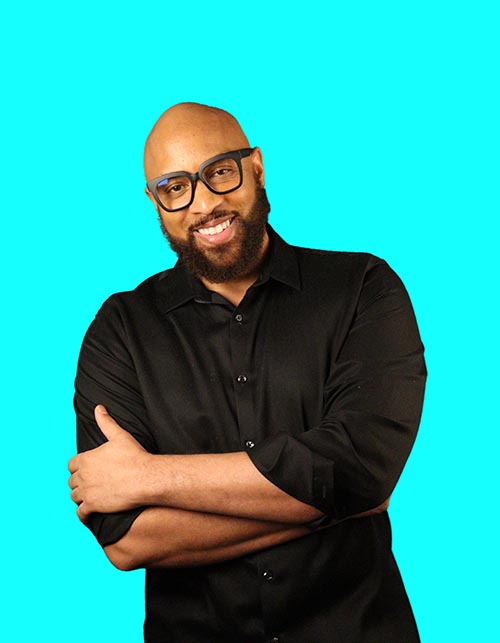
Terry Jones is a former Vice President at CompassRock Real Estate. He has interviewed, coached, and trained thousands over the course of his 25-year corporate career. He received 8 significant career promotions. Today, he’s a talent development trainer, career coach, mentor, and consultant, helping professionals maximize their interview and work performance and overcome (often hidden) obstacles to believe in the power of possibilities through learning, advance to the next level in their careers, and reach their full potential. Terry is the founder of the 3A Academy, author of How to Get Promoted Faster: How I Went From Manager to Vice President in 14 months, and creator of the Rise & Shine Promotions System Coaching Program and Online Training Series.
For almost 20 years, he has interviewed hundreds and trained & coached thousands as a corporate trainer, director, and executive. All coaching and training programs are designed to be part tactical and motivational to achieve extraordinary results. Terry’s goal is to motivate and inspire high-performance behavior that’s mind-shifting and life-changing.
The good companies understand that you're not just interviewing and sort of having them sell themselves to you, but you're also selling the company.
Terry Jones
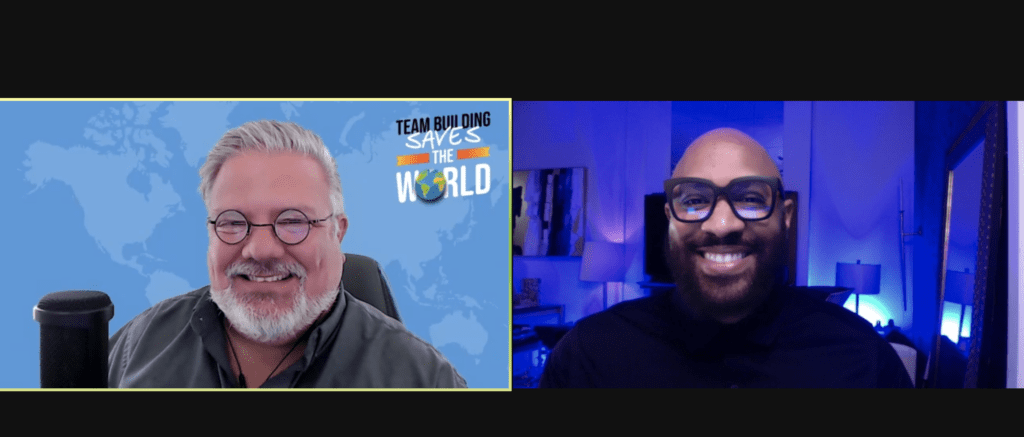
More great podcast episodes.
Season 6 | Episode 18
That’s a Wrap!
Season 6 | Episode 17
Work-Life Integration
Season 6 | Episode 16
Laughing it Off
Season 6 | Episode 15
Corporate Volunteerism in Action
Season 6 | Episode 14
Collaborative Play at Work
Season 6 | Episode 13
The Science of Supportive Workplaces
Season 6 | Episode 12
The Power of Being Present
Season 6 | Episode 11
The Age Advantage
